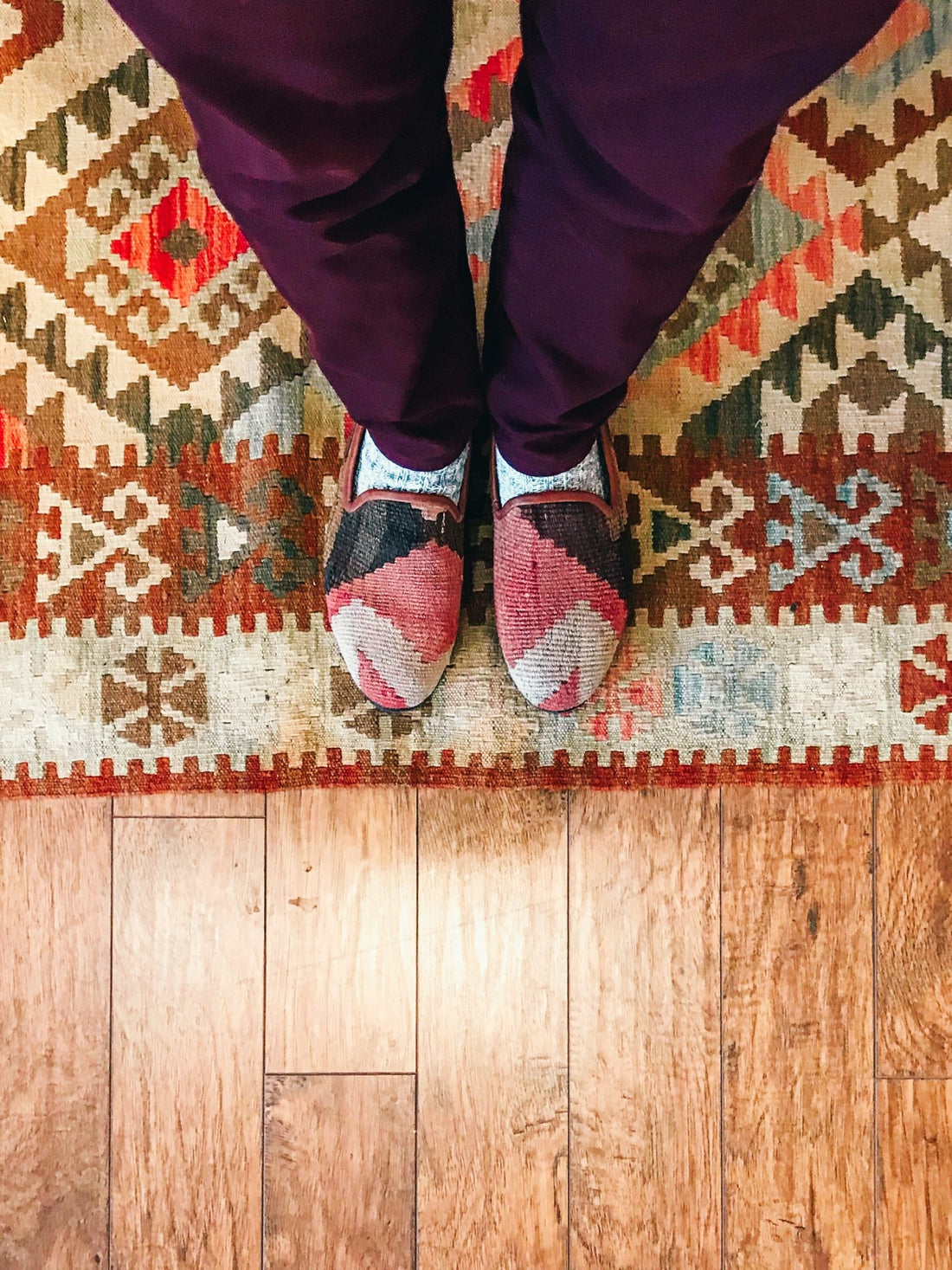Istanbul, Turkey -- Kilim traces back thousands of years to the cradle of civilization in Central Asia. For centuries, weavers silently imposed their personal feelings and identity into the rugs. The motifs enscribed into the rugs created a whole new language captured in the kilim. Our ability to understand or read kilim motifs can help us learn several things about the cultural, social, religious status, and living standards of the time.
What is a Kilim Motif?
Kilim Motif Definition
- A kilim motif is the message created by the weaver of a kilim relating to the culture, religion, beliefs, and social life of the past times. A motif is signified by the patterns, colors, and shapes woven into the rug espoused by the emotions and feelings of the weaver**, such as their inner feelings, desires, daily life, grief, fear, happiness, sadness, etc.
- **Traditionally, women wove the kilim rugs while men were at war or hunt.
Cultural Significance of Kilim Motifs
- The tastes and traditions of local and regional characteristics largely dictated the motifs - colors, sizes and shapes - weavers constructed into a kilim. The motifs weaved into a kilim would've been tied directly to the emotions and identity of the weaver at the time, thus making their significance personal and purpose thoughtful.
- Kilim motifs represented various human experiences.
- Kilim motifs are a media of transferring cultural heredity.
Kilim Motifs
Overall, there are four different categories of kilim motifs. Each motif has significance and purpose in the various context(s) of the time:

Life and Protection (Evil eye, Hands-on-hips, Ram's horn, Motherhood)

Beliefs (Cross, Hand, Hook)
 ,
, 
Animals (Bird, Wolf's mouth, Scorpion, Dragon)
 ,
, 
Animals (Bird, Wolf's mouth, Scorpion, Dragon)

Plants (tree of life, Burdock)
Kilim Motifs and Res Ipsa
Today, Res Ipsa recycles vintage Turkish kilim and gives the unique textile an international flair. Using Western shapes and styles, we merge East and West, ancient and modern, significance and purpose. In company with the emphasis of its one-of-a-kind qualities and deeply thoughtful creation, we seek to spread the magic of kilim to Western culture in a modern form.
Ancient cultures used kilim motifs to communicate their various human experiences. Today, Res Ipsa breathes lifes into ancient kilim by transforming the materials into our premium handmade luxury goods inspired by our travels. The thing speaks for itself. #OurBrandisTravelDedcoding the Magic
The photo atop of this article features Res Ipsa men's kilim loafers standing on our vintage Turkish kilim rug. The pattern on the rug shows the eye motif, which is intended to ward off the evil eye. It also features the Hands-on-the-hips motif (motherhood) and the Wolf's-mouth motif (protection of the flocks).
Other examples:

Res Ipsa men's kilim sneakers featuring the burdock motif. With many flowers, the plant (and sneaker) signifies abundance to ward off the evil eye.

Res Ipsa men's kilim loafers with the earring motif. This motif signifies marriage or a common wedding present (hint hint).


Res Ipsa men's kilim loafers featuring the ram's horn motif. This motif denotes heroism, masculinity and power.

Res Ipsa women's kilim sneakers featuring the hook motif, which represents protection from the evil eye. The hook is used to destroy the evil eye.

Res Ipsa kilim backpack featuring the Wolf's Mouth motif. This motif signifies the protection of the flock (and in the modern sense your laptop, notes, etc.).

Res Ipsa kilim weekender bag featuring a bird a.k.a. the motif for luck, happiness, and strength.
---
#ResIpsa
#OurBrandisTravel



